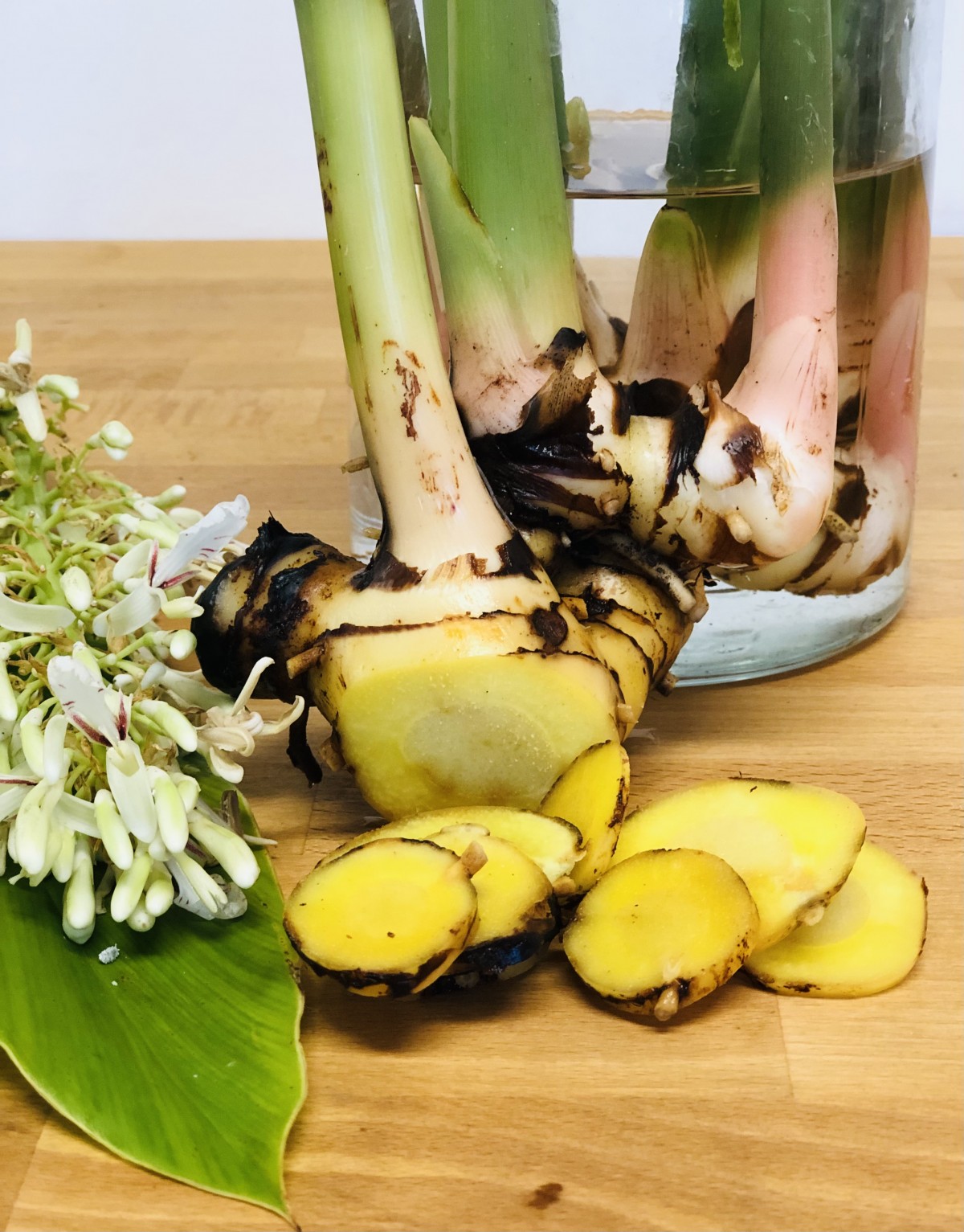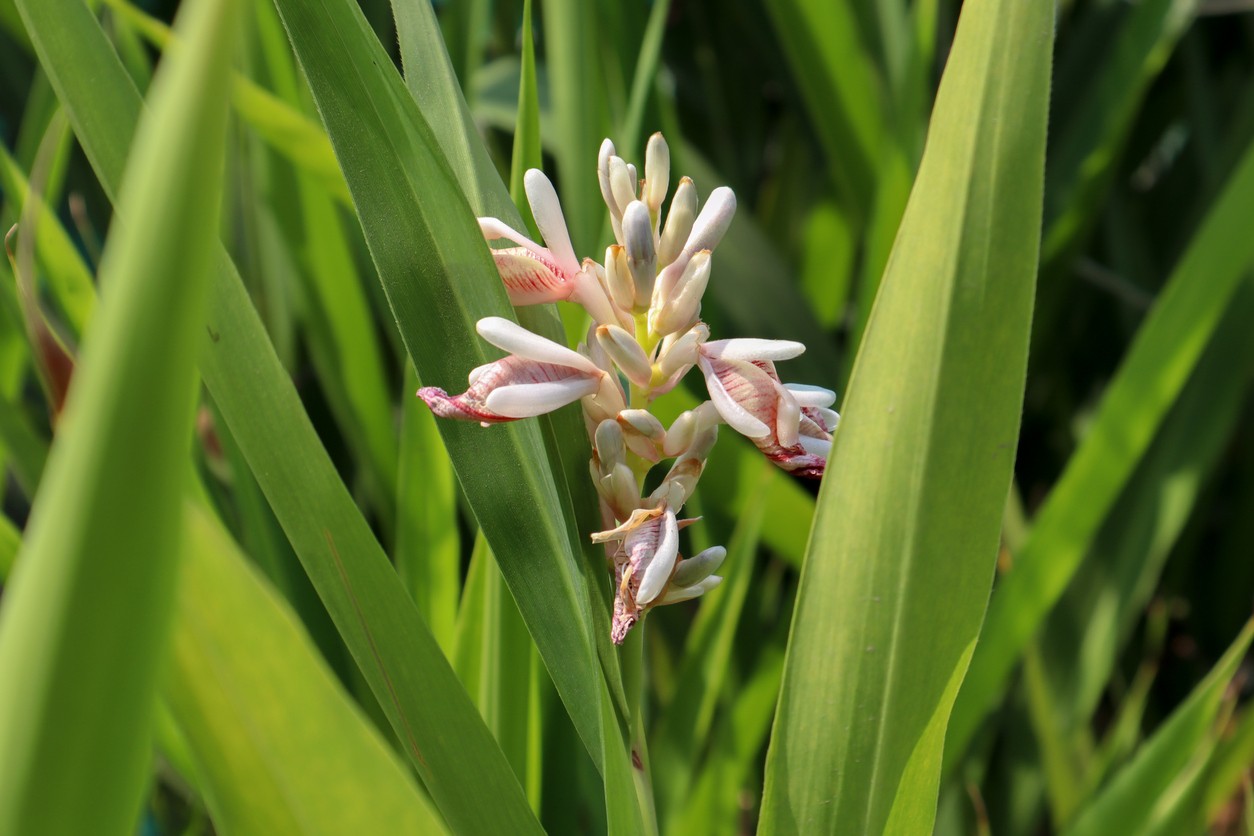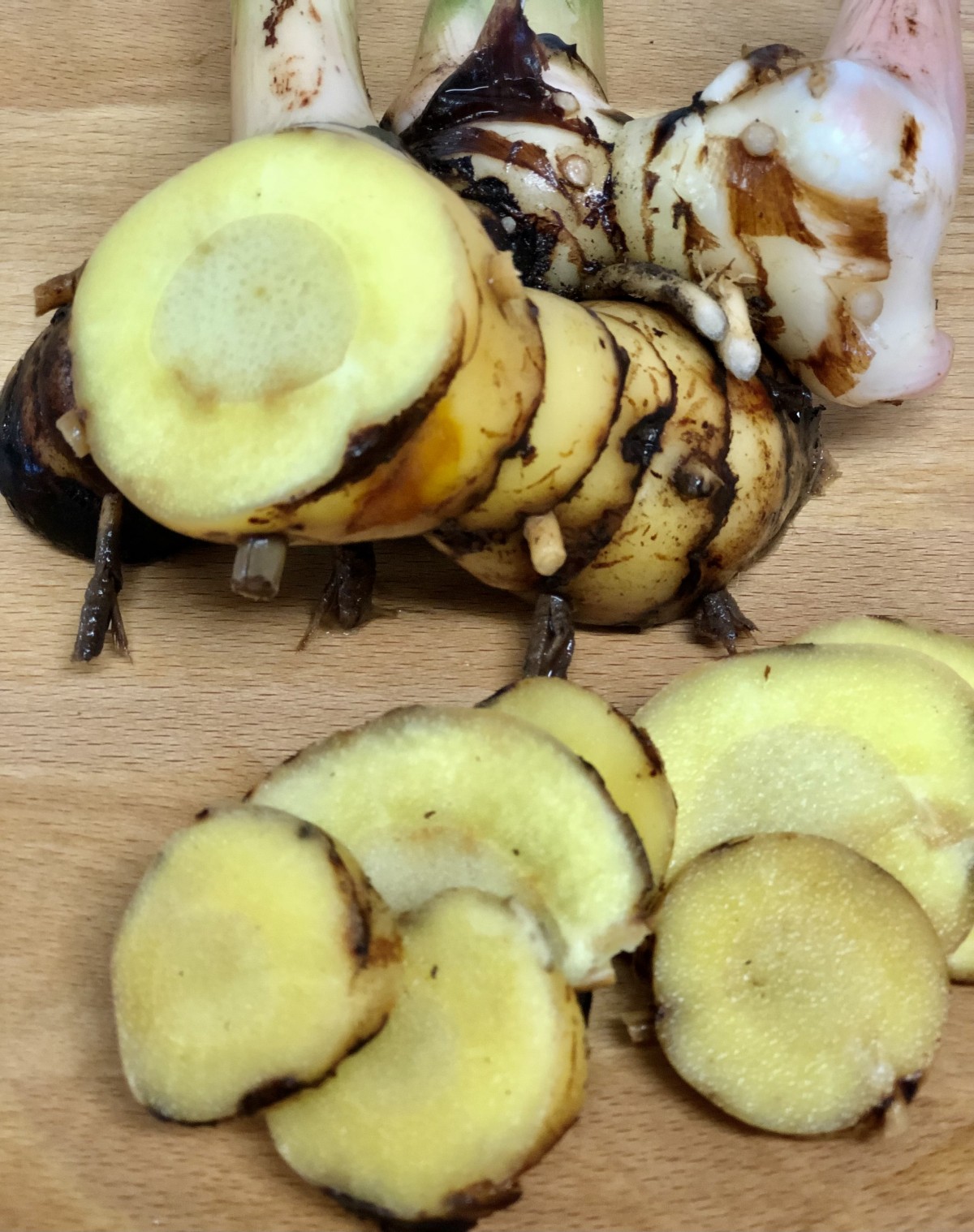Galangal: A wonderful spice and potent medicinal
A great addition to any garden
 Galangal is a handsome garden plant, easy to grow, and a powerful medicinal herb.
Galangal is a handsome garden plant, easy to grow, and a powerful medicinal herb.
Galangal is a tropical herbaceous plant belonging to the ginger family that produces rhizomes. It is similar to ginger and turmeric, with a powerful and distinct taste. Many people describe its flavor as both earthy and citrus-like, with a spicy kick.
There are two types of galangal:
Greater Galangal (Alpinia galanga), native to Indonesia, and can grow to 2 meters, bearing wide blade-like leaves, and has a milder flavor.
Lesser Galangal (Alpinia officinarum) grows on the southeast coast of China and in India, is more bold in flavor, and grows to about half the size,
Both varieties can be used interchangeably. At our Bustan we grow the Greater Galangal, which is extensively used in Thai cooking.
Health Benefits
Galangal, like ginger and turmeric, has cancer-fighting properties, reduces inflammation and provides digestive support.
Galangal has been found to have significant positive effects on eight different types of cancer, as well as reduce chronic and specific forms of inflammation, often more effectively than medication.
Inflammation is at the root of most diseases, including cancer, heart disease, Alzheimer's, arthritis, and auto-immune diseases, and with Galangal’s anti-inflammatory, antibacterial and antifungal qualities, it can help to fight off staphylococcus, E. coli, listeria, salmonella, and clostridium. It has even been shown to be effective in fighting antibiotic resistant types of bacteria, as well as helping to prevent stomach ulcers caused by the H pylori bacteria.
For more information on the connection between galangal, cancer, and other health benefits, visit Dr. Axe’s website

How to Grow Galangal
Galangal is easy to grow as long as you live in an area that stays above freezing throughout the winter months. For those living in a colder climate, galangal does well and a potted specimen, however, in order to produce significant sized tuber, it needs at least a 5 gallon container and plenty of sunlight. Galangal is best propagated by rhizome division in the spring, prefers regular watering, loose, well draining soil, and part shade.
Let it become well established before you begin harvesting the external rhizomes. A good layer of mulch will make it easier to do so. Once you feel your plant is large enough, gently remove some of the outer rhizomes with a sharp knife while leaving the rest of the plant intact.
Wash thoroughly and cut into small slices before setting out to dry.

How to Use Galangal
Galangal is best known for its culinary uses in soups or curries, however, it can also be used to create a beautiful yellow dye.
When used raw, galangal has a powerful flavor, which is why most people cook it before consuming it. Younger shoots are generally milder and can be made in a paste to be incorporated in salads, while older rhizomes are tougher and bolder in flavor, and should be used in soups and curries.
Galangal flowers are edible and make a beautiful addition to any salad, while the berries can be used as a spice, similar to cardamom, once they turn bright red.
Galangal is an essential element in Thai cooking, and is probably best known for making Tom Kha Gai (Thai coconut soup). Cook With Manali has a great vegan version for this all-time classic.
And last, but not least, another great way to use fresh galangal is to candy them :) All you need is 225 gr fresh galangal root and 225 gr of organic cane or coconut sugar.
To make candy, clean and thinly slice fresh galangal root, cook for 30 minutes in boiling water. Drain and cool.
Place cooked galangal roots in a pot with ⅛ cup water. Add the sugar, bring mixture to a boil, stirring frequently. Continue to cook on a medium heat for 10 more minutes, or until the sugar has started to crystallize. Place pieces on a sheet of organic baking paper, allow to cool, and enjoy.
